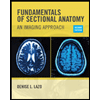The joint that exibits the least amount of movement (range of motion)is: a.gliding (arthrodial-carpals) b.hinge (ginglymus-elbow c.pivot(trochoid-c1) d.ellipsoildal(condyloid-elbow) e.saddle(sellaris-thumbat trapezium)
Histology
Histology is the microanatomy method and a branch of biology that studies the anatomy of tissues. It includes viewing tissue in a magnified view under the microscope. Microanatomy also includes the process of study of organs called organology and the study of cells called cytology. Histopathology is a branch of biology that includes microscopic identification of diseased tissue. The field of histology comprises the preparation of the tissues and collection of cells as specimens for examination under the microscope. These processes are done by technicians like histologists, histotechnicians, and biomedical scientists. Histopathology is the diagnosis and research of tissue diseases that require the examination of tissues and/or cells under a microscope. Histopathologists are in charge of determining tissue diagnosis and assisting clinicians in managing a patient's care.
Endocrine System
Human body functions due to the collective work of the organ systems. One of them is the endocrine system. It is a chemical messenger system constituting the hormones directly released by the endocrine glands into the circulatory system. The study of this system is known as endocrinology. The word 'endon' means inside, and 'crine' means secrete, making the word "endocrine."
The joint that exibits the least amount of movement (range of motion)is:
a.gliding (arthrodial-carpals)
b.hinge (ginglymus-elbow
c.pivot(trochoid-c1)
d.ellipsoildal(condyloid-elbow)
e.saddle(sellaris-thumbat trapezium)
Trending now
This is a popular solution!
Step by step
Solved in 3 steps






